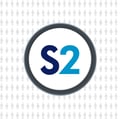
Executive Chairman Bob Byrne joined Source2 in 2017 after a successful 20-year career in private equity and entrepreneurship. He discovered Source2 as a client during ownership of a company he later sold, and after having the opportunity to see Source2’s value in action, Bob wanted to be directly involved.
Bob, who currently also serves on multiple boards of directors, has a lifetime of experience and is highly sought after for his business acumen and insight. Bob has a keen eye for labor market trends and data analysis, and we recently got his perspective on the topic of talent acquisition trends and solutions.
Where do you think companies’ talent acquisition efforts should be focused right now?
This is an unusual time. Some companies have already, or may likely soon, experience some softening in demand to the extent that they are in industries that are interest rate sensitive, such as automotive, housing, renovations, big-ticket durable goods, and travel and leisure. However, many companies, even those in interest rate-sensitive industries, have been operating at considerably less than full capacity given the shortage of labor. Many companies still remain desperate to staff up to meet existing demand and work down their backlogs.
Correspondingly, I think the labor market will remain tight even in the face of rising inflation, higher interest rates and some softening in certain industry sectors. As a result, we recommend that companies continue to aggressively focus on talent acquisition. Don’t expect that a pending economic slowdown will result in large layoffs and easier recruiting. Companies will do well to remain committed to very proactive recruiting activities to find the best-fit people and potentially upgrade their talent.
What solutions do you think are paramount for companies to have in place for successful recruitment and hiring? How has this changed since your previous business partnered with Source2 to now?
In my own case, the greater the uncertainty of market conditions, the more I valued flexibility and scalability. As a former client, Source2 enabled me to keep my recruiting costs highly variable, which was highly desirable in all market conditions. What is different now than when I owned and ran a field service company is that more recruiting technology and “muscle” is required to source and engage candidates. Additionally, companies need to respond more quickly to candidates, which, again, is enabled by a greater reliance on technology, such as text-to-apply. The marriage of lean and agile processes with technology can be a source of competitive advantage.
Looking at Q2 to date and the state of the economy, what are your predictions or things to look for in Q3 and the remainder of 2022?
Softening in demand in key industries such as autos and housing typically has a domino effect in impacting spending across the wider economy, leading to a broad-based recession with corresponding layoffs and increased unemployment.
However, circumstances are uniquely different than in the past. While the economy will likely slow down and indeed may slip into a recession (officially, 2 consecutive quarters of negative GDP growth), there are extenuating circumstances that suggest the labor market may not experience a rapid slow down with corresponding high unemployment.
While an economic slowdown will impact certain industries, resulting in lower demand for workers and even layoffs, the likely outcome is some dislocation in which certain regional markets are impacted. That said, it is likely the case that on a national basis we will still experience a high demand for workers relative to the supply. The “wild card” is whether the increased cost-of-living driven by inflation will trigger an increase in labor force participation.
What do you think are the key indicators or data trends to watch for smart talent acquisition moving forward?
Labor participation rates remain stubbornly low, and higher wages have not significantly motivated more people to enter the workforce, although this may change. The increasing cost-of-living may force people to re-enter the workforce to supplement fixed incomes that are not keeping pace with inflation, especially the rising costs of non-discretionary items, such as gasoline, rent, mortgage payments, and food.
The Federal Reserve is tightening its monetary policy in an attempt to dampen the economic activity that has been leading to high inflation. Their tactic of using higher interest rates will likely impact many sectors of the economy that rely on consumer borrowing:
- Spending on “high-ticket” discretionary durable goods that impacts the affordability of automobiles, homes, RVs, boats, renovations, and upgrades in furniture, appliances, etc. may decrease.
- While travel & leisure are still doing well due to pent-up demand from Covid, this sector will likely see a pull back in demand in late 2022 and throughout 2023.
The demand for labor has so outstripped supply that we are still seeing a ratio of 10 job postings for every candidate in the market. This does not account for the fact that some companies have curtailed plans for expanding capacity through the addition of shifts. In fact, the major industries just mentioned have already been experiencing weakness, and yet the labor market has remained extremely tight:
- New housing completions have been modest since even before the pandemic as labor availability and key supplies have been in short supply.
- Auto production has been curtailed for much of the past 18 months as critical semiconductor chip sets have been in short supply, and dealer lots are still very sparse of inventory.
Additionally, many industries have large backlogs to work through and are constrained by recent supply chain tightness that itself has largely been the result of labor availability. A number of other industries are simply more recession resistant, such as agriculture, food processing, healthcare, personal services, professional services, and government services, and stimulus money is still supporting significant infrastructure spending on roads, bridges, etc.
At a rate of 3.5%, unemployment is below what has typically been regarded by economists as the “structural unemployment” level that is observed during “full employment” (i.e., labor market participants in between jobs). It is likely that the level of “structural unemployment” is being reconsidered to be a lower rate than historically due to the phenomenon of working from home. An employee can literally change jobs in a day and never have to move or experience any time unemployed between jobs.
What is your biggest takeaway for the future from the pandemic-era labor market evolutions we’ve experienced?
Talent acquisition will still be challenging and competition for quality talent high, but pockets of opportunities will exist for companies with the agility to flex their recruiting efforts. Speed will remain a competitive advantage in finding and engaging top talent that may become available.
If your HR and talent acquisition teams are already stretched thin or you’re searching for better solutions, a partnership with Source2 could make sense for you. Connect with our executive team at solutions@source2.com for more information and to discuss the specifics of your business situation.

Jul 12, 2022 4:54:07 PM



